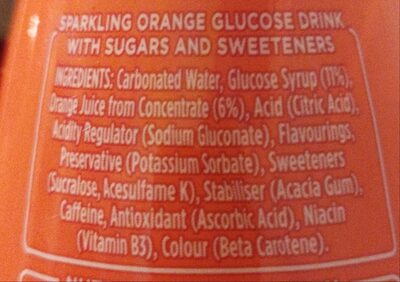Lucozade Energy Orange - 900ml
This product page is not complete. You can help to complete it by editing it and adding more data from the photos we have, or by taking more photos using the app for Android or iPhone/iPad. Thank you!
×
Barcode: 5054267010710 (EAN / EAN-13)
Quantity: 900ml
Packaging: en:hdpe-bottle
Brandaí: Lucozade
Catagóirí: en:Beverages and beverages preparations, en:Plant-based foods and beverages, en:Beverages, en:Plant-based beverages, en:Carbonated drinks, en:Fruit-based beverages, en:Sodas, en:Fruit sodas, en:Orange soft drinks, en:Soft-drinks
Country: An Ríocht Aontaithe
Matching with your preferences
Environment
Packaging
Transportation
Report a problem
Data sources
Product added on ag kiliweb
Last edit of product page on ag fcox143.
Product page also edited by alfood, foodless, foodvisor, inf, raphael0202, swipe-studio, yuka.sY2b0xO6T85zoF3NwEKvll52WovyvTWdKjH5nUeI5OaRNrzwPY5S4tfVbKo.










